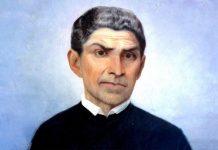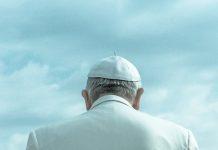Like July 14, 1789, September 11, 2001, constituted, on its own right, a milestone in the history of the West and of the whole world.
Editorial (11/09/2021 5:22 PM, Gaudium Press) For the renowned historian Daniel-Rops, “the evolution of human societies does not know abrupt cuts, and from the past to the future, changes take place more by transformation than by sudden mutation.”[1] This, however, does not prevent the existence of fateful dates, “in which it seems that the very stream of history changes direction.” [2] Such dates exist for small regions or great civilizations, and many of them are underscored by the fall and ruin of buildings, heralding radical changes in events.
The Bastille, Symbol of a hated regime
If a literary writer had dared to imagine what happened in Paris, he would have run the severe risk of being labelled a madman or a conspirator. But this was no fiction. On July 14, 1789, history itself was in charge of drawing a tragic succession of horrors with the paints of the purest reality. Unexpectedly, an armed mob flocks to the Bastille fortress. Firing incessantly and trying to set fire to one of the towers, they finally manage to break the moorings of the drawbridge. It falls sharply. The courtyard is invaded, and the buildings are ransacked. The crowd, drunk with blood, rushes to the Council Chambers. Pale, Mayor Flesselles comes out to meet them. He had not even completed three steps when he was killed and beheaded.[3]
At the time, the former medieval fortress had been transformed into a government prison holding only seven prisoners: four counterfeiters, a young man imprisoned at the request of his family, and two lunatics.
Upon taking the Bastille, the revolutionaries were in search of the weapons and ammunition deposited there. However, the fortress itself was of no greater significance; its conquest was extolled by propagandists, lauded by the Assembly, approved by the court, and legitimized by Louis XVI. It became the hallmark of royal pusillanimity and the “proof that the monarchy renounced its own principles.”[4]
The storming of the Bastille became one of the greatest icons of the French Revolution. Why? Although the invaders searched for weapons, the gesture had a more profound dimension: the castle was the symbol of the monarchy, the regime they wanted to break with. Its ruin represented the crumbling of Monarchy as representing “the supreme recourse against the wickedness of men and the hostility of things.”[5]
The world enters new and abominable landscapes
“A day of darkness in the history of humanity,” were the words used by the Supreme Pontiff to resume September 11, 2001.[6]
In fact, at 8:45 AM, New York time, an airplane hijacked by terrorists crashed into one of the world’s most prominent buildings. Eighteen minutes later, the building next to it was hit by another plane. As the clock struck 10:30 AM, the twin towers of the World Trade Center – a hundred and ten-story high structure – were on the ground, reduced to a rubble of iron and concrete.
About forty minutes after the first explosion, a third plane hit the Pentagon, headquarters of the American Military. And at 11:29 AM, a fourth plane crashed on a field in Pittsburgh, PA. The attacks claimed thousands of victims.[7] The ruthless attack, condemned by all international authorities, also had a highly symbolic character. For the then chancellor of Germany, Gerhard Schroeder, the attacks were a “declaration of war on the entire civilized world.”[8] As a columnist would point out later on, “[A] new page of history begins […] The verdict is peremptory: the world is entering new and abominable landscapes.”[9]
Like July 14, 1789, September 11, 2001, constituted, on its own right, a milestone in the history of the West and of the whole world. With the crumbling of buildings symbolizing seemingly unattainable powers, the world opened its eyes to a sudden turning of pages in the book of History.
Twenty years after that day of terror, we realize how different the history of our century is from that of its predecessors. The unrestrained instability in most fields and the insanity of so many prominent public figures would never have had a place in the troubled, not-so-remote 20th century…
One may wonder if the current events of this “new era,” heralded by the largest terrorist attack in history, do not seem as unusual as the king’s beheading would have been to an 18th century Frenchman.
By João Paulo Bueno
Compiled by Gustavo Kralj
[1] DANIEL-ROPS, Henri. History of the Church of Christ. A Igreja da Renascença e da Reforma. São Paulo: Quadrante, 1996, v.I, p.104.
[2] Idem, ibidem
[3] Cf. GAXOTTE, Pierre. The French Revolution. Porto: Tavares Martins, 1945, p.92-93.
[4] Idem, p.94
[5] Idem, ibidem
[6] JOHN PAUL II. General Audience, 12/9/2001.
[7] Cf. One country


































